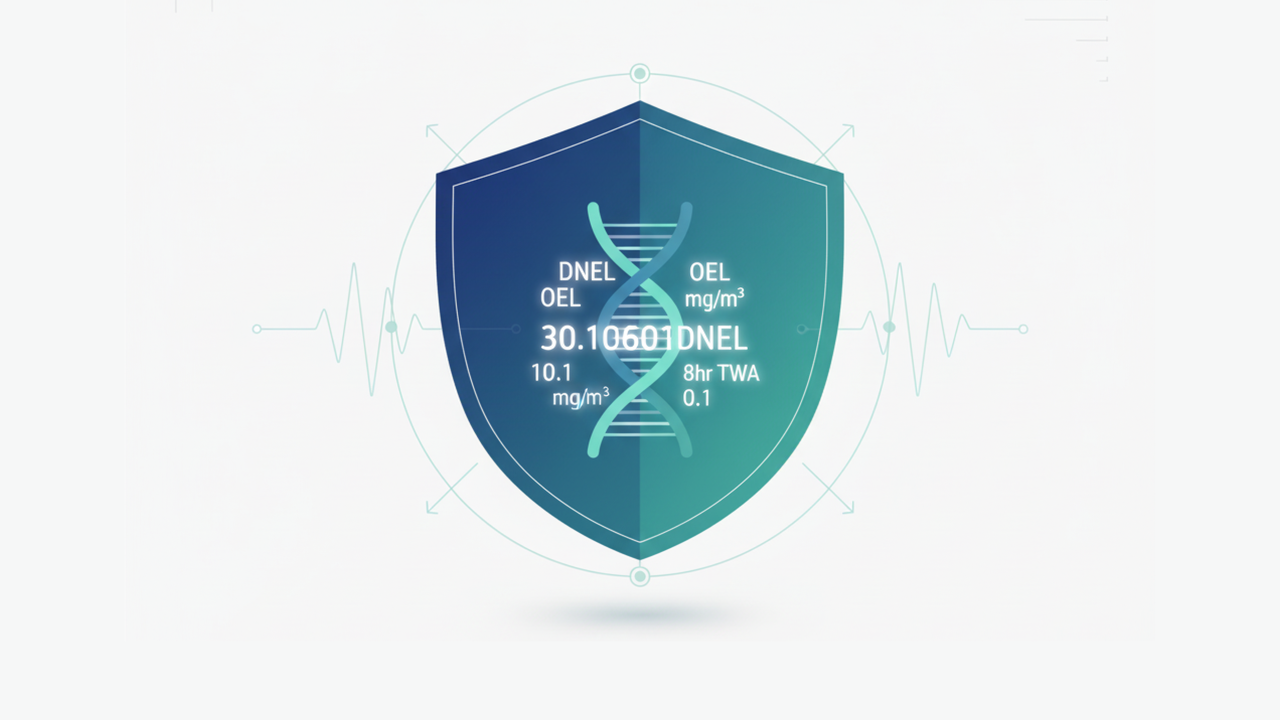
You open Section 8 of a Safety Data Sheet. There it is: “DNEL.” Sometimes there’s also an “OEL.”
If you’re not a toxicologist, it can look like alphabet soup. But these numbers are the speed limits of chemical safety, and understanding who sets them (and why they sometimes differ) helps you steer exposure in the right direction.
DNEL stands for Derived No-Effect Level.
Under the EU’s REACH regulation, manufacturers or importers must figure out at what exposure level people can safely use a substance, considering inhalation, skin contact, or ingestion; short-term versus long-term exposure; workers versus consumers. That “safe line” is the DNEL, and it appears in Section 8 of an SDS.
DNELs are built on toxicological studies, the same ones you’ll find summarised in Section 11 (Toxicological information) of the SDS, and then adjusted with safety factors to cover uncertainty and protect sensitive groups.
OEL means Occupational Exposure Limit.
Unlike DNELs (which registrants calculate for REACH), OELs are usually set by national authorities or the EU’s Scientific Committee on Occupational Exposure Limits (SCOEL). They focus on workplace inhalation exposure, typically an 8-hour time-weighted average, sometimes with a short-term limit.
While DNELs aim to be purely “health-based,” OELs may also consider technical feasibility or socio-economic factors. They’re often binding or recommended in workplace law, and inspectors check compliance against them.
For the same substance, you may see several DNELs and one or more OELs, and they might not match. Reasons:
Best practice: when both numbers exist for the same scenario (e.g., long-term inhalation for workers), apply the stricter one.
OELs don’t just sit in legislation; they are actively used in risk assessment models.
For example, the ECETOC TRA (Targeted Risk Assessment) tool, widely used under REACH for worker exposure assessment, relies on OELs or DNELs as benchmarks.
Other models, industry risk assessments, and workplace hygiene programs also use OELs to check whether measured or estimated exposure is acceptable.
In practice:
The value of OELs? They bridge the scientific world of toxicology with the practical world of workplace safety, giving employers and inspectors a common benchmark to act on.
A DNEL or OEL is only useful if you know what’s happening on the shop floor.
Air monitoring, skin swabs, surface wipes, those measurements tell you the real exposure. Compare them to the right reference:
Think of DNELs and OELs as the speed limits. Workplace measurements are the radar gun telling you if you’re keeping exposure “under the limit.”
Most products aren’t single substances, they’re mixtures. Paints, cleaners, adhesives: combinations of several chemicals, each with its own DNELs or OELs.
Here’s the challenge:
As a SHEQ professional, you need to consider all relevant components, compare their values, and check workplace measurements against the strictest applicable limit.
In practice, this means the safety benchmark for a mixture isn’t always a single number, it’s a patchwork of component-specific limits that must be respected together.
Not every SDS tells the full story.
Especially when a document wasn’t created with a professional authoring platform, OELs for individual components are often missing. Suppliers may only provide DNELs, which are legally required under REACH, and leave out OELs, even though those values are critical for workplace safety.
That means the job falls back on the SHEQ specialist, who has to manually look up OELs in national lists, add them into their assessment, and make sure the data stay updated. A time-consuming and error-prone process.
At NextSDS, we believe these numbers shouldn’t be buried in a PDF, or left out altogether.
Our platform automatically extracts every component from the SDS and maps it to our extensive CAS database. From there, we enrich the data with component-specific and country-specific regulatory details, including OELs where they exist.
This means you don’t just see the DNELs supplied by the manufacturer, but also the OELs relevant to your workplace and jurisdiction.
So SHEQ teams don’t waste time hunting for missing data, they can focus on managing risk, ensuring compliance, and keeping workers safe.